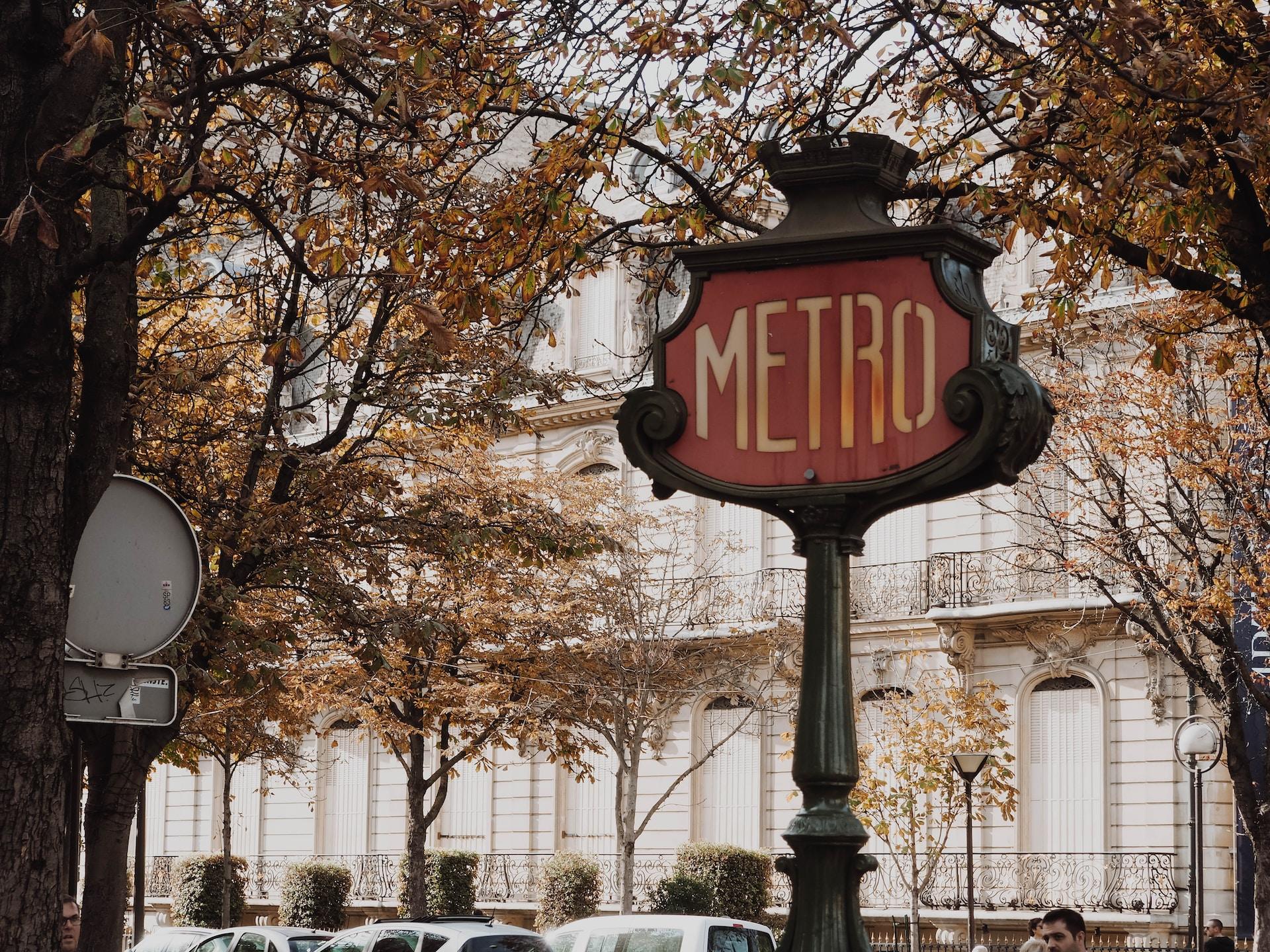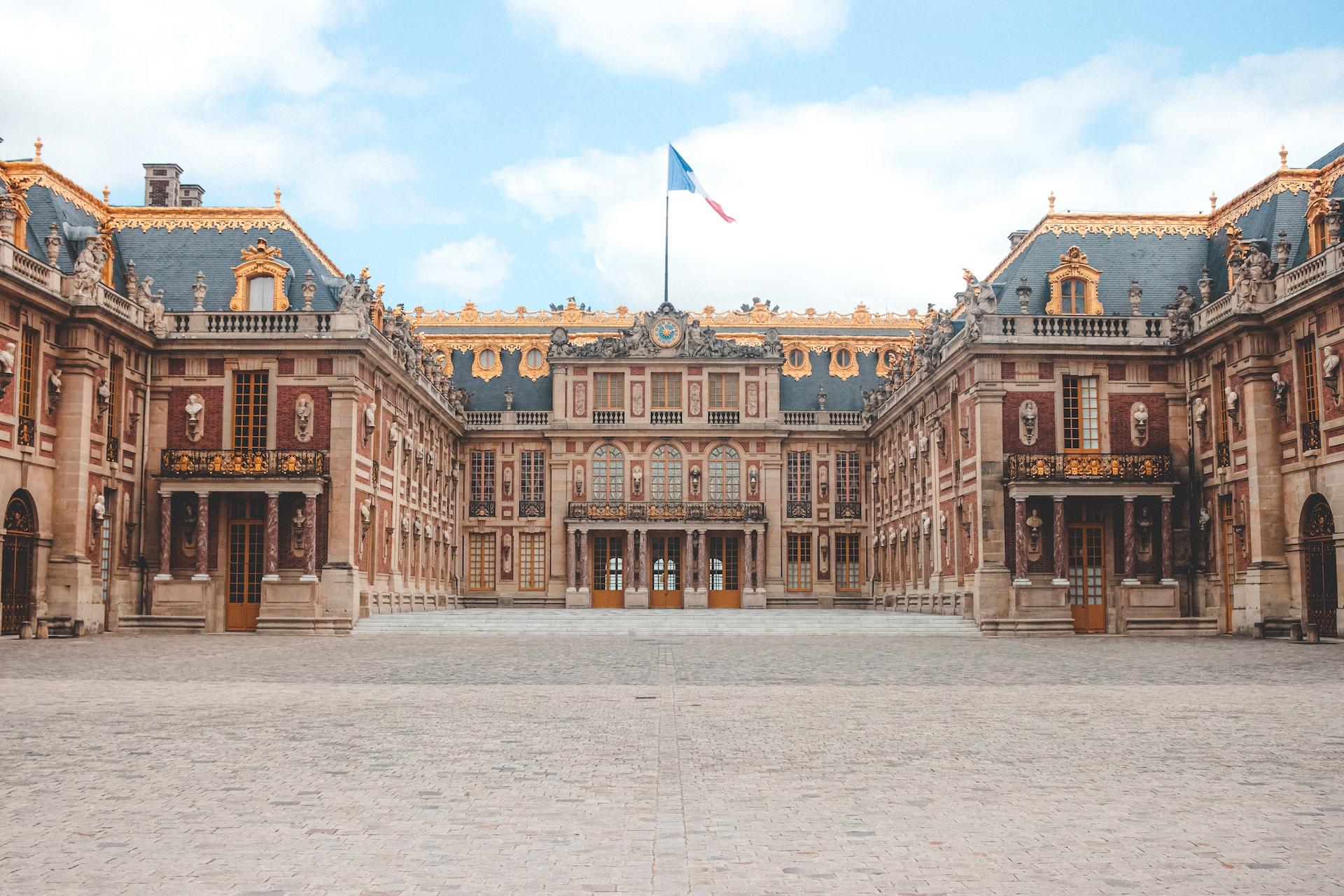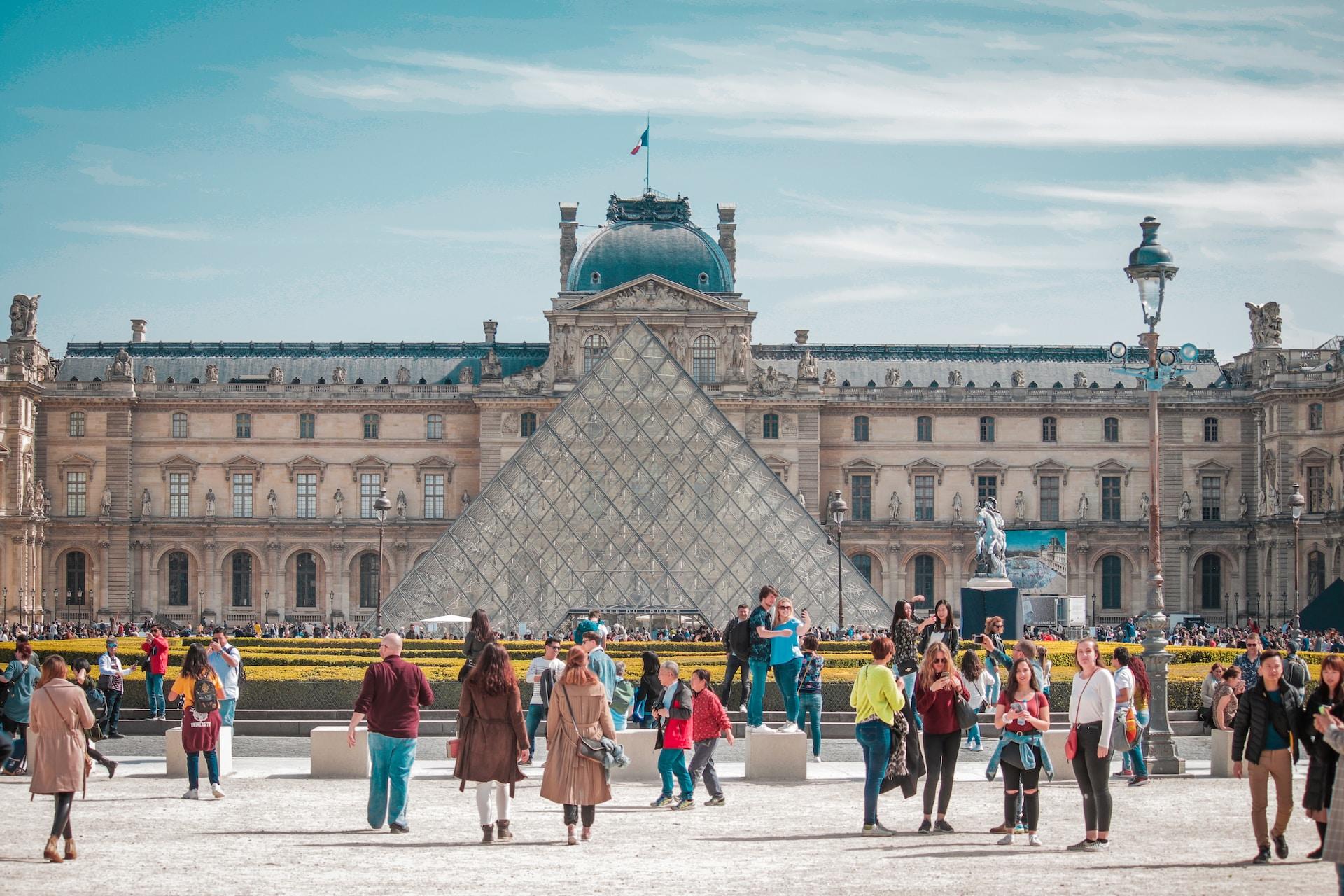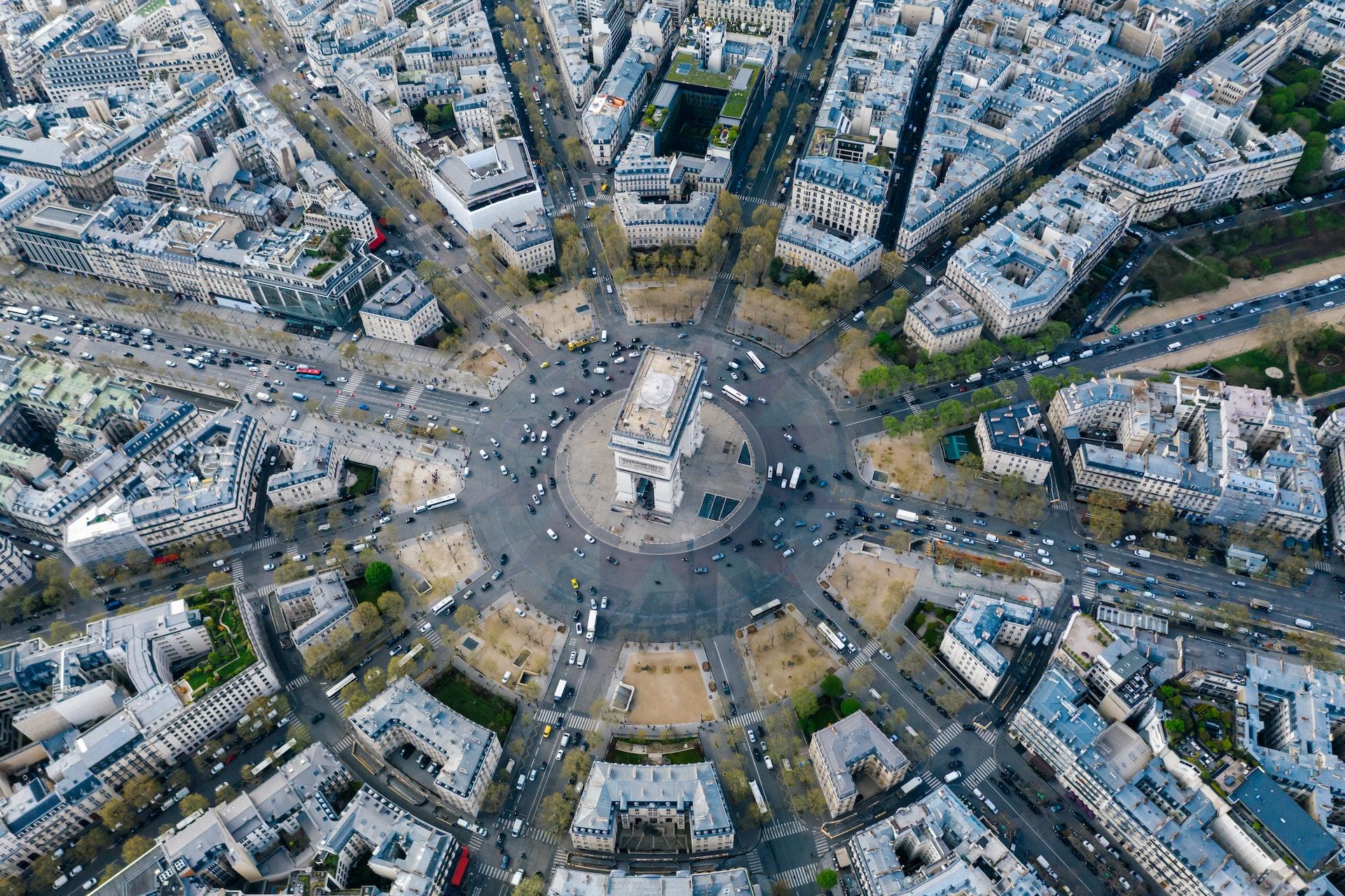There are two types of people in the world - those who want to visit France at least once in their lifetime, and those who already have!
And what is there to not fantasize about? The French language intrigues the hearts of most language lovers, and the country is on the wishlist of every vagabond. The tourism sector of the country contributes largely to the economic development of France and also ensures that there will always be a rich, enticing culture for travelers to see.
If you’re interested in learning the French language, learning more about the country will help you gain context behind the words and increase your fluency.
Whether you want to be a tourist, a student, or an employee in France, or you’re simply a Francophile, knowing these cultural facts about France will help you appreciate l’Hexagone!

1. Geometric Nickname
France is sometimes called “l’Hexagone.”
First of all, why is France sometimes called “l’Hexagone”?
If you look at the country's shape, it is roughly a 6-sided shape. You might have to squint a little to see it, but it makes sense - I promise!
Of course, this only refers to Metropolitan France, which is the European country nestled between Spain and a handful of other countries including Italy, Switzerland, Luxembourg, Germany, and Belgium.
The French Republic refers to the other French territories around the world, including French Guiana, Corsica, Martinique, and French Polynesia.
2. Getting Around
There are thousands of kilometers of train tracks to take you all over the country.
If you want to speed across Metropolitan France, you’re in luck!
With nearly 30,000 kms of tracks all over the country, you can travel near and far with tracks laid down by the SNCF (Société nationale des chemins de fer français or National Society of the French Railways).
Some of the major operators on the tracks include Thalys, TGV Lyria, Eurostar, RATP, Elipsos, and ECR. The network of tracks includes the notorious and famous Parisian Métro (and others), the RER (Réseau Express Régional) just outside of Paris, and the TER (Transport express régional).
You can even travel to neighboring countries including the UK via train!

- The Parisian Metro is one of the most famous public transportation systems in the world. | Photo by Anastasia Zhenina on Unsplash
3. Ancient History
Early humans settled in modern-day France earlier than previously thought!
Some of the oldest evidence of humans in Europe was found in France very recently!
In 2022, it was discovered that there was evidence of human tools in the Rhône Valley dating back 54,000 years ago! This is about 10,000 years earlier than previously thought.
It appears that they didn’t stay for long in this area (perhaps a scant 1,000 years or so) before re-establishing their presence a few thousand years later.
You can see evidence of ancient humans all over France. It’s home to the cave paintings in Grotte de Lascaux (The Lascaux Caves); the prehistoric sites of Bois-de-Riquet, Terre-des-Sablons, Pont-de-Lavaud, and others; the Grotte du Vallonnet; Fieux and Petit-Bost; burial sites at La Chapelle-aux-Saints; evidence of Cro-Magnons people; and more!
4. Roman Empire
France was once part of the Roman Empire.
The first well-established peoples in the modern-day region of France were known as the Gauls (which were also known as Celts!) in about 900 BCE.
In around 600 BCE, Greeks actually founded the city of Marseilles.
Since the land of the Gauls consisted of over 60 different smaller tribes or clans, it was easy for the Romans to conquer them starting in 121 BCE, in what is now known as Province.
In 58 CE, Julius Caesar began conquering the rest of the area. The Romans began to build roads across the land and the Gauls naturally began to incorporate Roman culture into their own. Latin became the common tongue.
Eventually, the Germanic people known as the Franks came to Northern France, took over, and the country became known as Francia (“land of the Franks”).
In 987 CE, the country became officially known as France! The name has been around for quite a while!
Discover different French classes on Superprof.

- The Lascaux cave paintings show some of the oldest man-made art. | Photo by toshihiko tanaka on Pexels
5. A Historical Mashup
France was not always “French,” and has had input and influence from many other cultures.
As if this Gaul/Greek/Roman/German mixture wasn’t enough, France experienced quite a few other cultures in its early years.
Other early visitors to the area (who each had varying levels of raiding, treatise, and other interactions) include the English (Bretons), Vikings, and North African Arabs.
Additionally, various ruling families, changes in religion and languages, and nearby worldly events also influenced the goings-on in France.
So, you can see how this potion of influences has resulted in the complicated and rich tapestry of France through the ages, eventually culminating in modern-day society!

6. Capital for Tourism
France is frequently in the top 5 countries worldwide for most tourists.
In 2022, it came 4th in terms of international tourism receipts, after the US, Spain, and the UK.
There is no shortage of incredible things to see and do in France!
Of course, there is Paris, the capital, the City of Lights, full of museums and monuments.
But more than that, France boasts 37 UNESCO World Heritage sites, tranquil Les Plus Beaux Villages de France, a wide array of biomes like mountains and ocean beaches, exciting cities, and countless charming towns.
Whether you want to enjoy a day at Disney, tour museums, ski the Alps, swim in the Mediterranean, see extinct volcanoes, or visit old castles in quaint towns, you can find it all in France!

- Le Chateau de Versailles and its gardens are one of the UNESCO World Heritage sites. | Photo by Mathias Reding on Unsplash
7. Culture of Gastronomy
Food has been at the center of French culture for hundreds of years.
How could you talk about France and not mention the rich, deep, overarching culture of the food?
Why is food so important in France?
It all began in the Middle Ages, during the reigns of monarchies. Flavorful, copious, lavish, extravagant feasts were standard for royals. While the peasants couldn’t afford anything like what the royalty dined on, they undoubtedly wished they could partake.
After the Revolution, the former cooks of the royals were released back into common society, where they took their culinary skills with them and began exposing everyone to a new way of cooking.
Over time, trends and styles of cooking have evolved, but the culture of taking pride in creating a food masterpiece never left.
Discover various online French classes here.
8. Regional Fare
There are hundreds of different varieties of foods due to the diverse regions in France.
It seemed that everyone took pride in making something unique and flavorful, and recipes and traditions in different regions began to take shape. As a result, we get facts like these:
- There are between 1,000 and 1,600 different kinds of cheese produced in France
- There are dozens of different styles of smoked and cured meats (charcuterie) in France
- There are about 2,900 different kinds of wine in France
- There are at least 15 different types of bread in France, but it’s likely that regional and familial recipes account for hundreds of other varieties
- There are dozens and dozens of different pastries, split into different categories:
- Les Viennoiseries
- Pâte à Choux
- Les Gâteaux
- Les Meringues
- Les Tartes
And many other varieties of foods exist, like quiches, tartes, potato dishes (pommes de terre), and other vegetable preparations like ratatouille.

- There are over 1,000 different kinds of cheese in France! | Photo by Eric Prouzet on Unsplash
9. When Food Made History
Different foods have frequently played pivotal roles in historical events.
There is a never-ending amount of culinary facts about France!
French and Italian relations were strengthened when Italian chefs taught French chefs about cuisine in ways the French had not yet encountered. This led to decadent and exclusive feasts for the wealthy and increased the divide between royalty and common folk.
Bread shortages added to the flames of the French Revolution (just look at Les Miserables!).
After the revolution, these culinary secrets were shared all over the country, leading to the widespread culture of cuisine creations.
The first restaurant that operated similarly to the way we know it today opened up in Paris in 1765, by a Mr. Boulanger. In 1782, another Parisian restaurant opened up which was more in line with modern-day establishments, called Grande Taverne de Londres. So, France was at the forefront of modern meals twice!
10. Secrets of Famous Landmarks
The Eiffel Tower has a secret apartment; The Louvre exists because of the guillotine; L’Arc de Triomphe marks a star; and Lady Liberty’s many sisters inhabit Paris and France.
Gustave Eiffel, the builder of the Eiffel Tower, built his own private and secret apartment atop the tower to welcome his guests, mostly intellectuals and scientists. This apartment is now open to tourists and visitors where you can admire the wax statues of Eiffel and a few of his honored guests.
He also constructed the Statue of Liberty, as we well know. But, various artists also constructed smaller replicas of Lady Liberty, and they are scattered all over Paris with a few others in different parts of France as well. In all, there are 8 copies in Paris and at least 4 other Mini Liberties in cities like Colmar, Lyon, and Bordeaux.
L’Arc de Triomphe is built at an intersection of 12 roads, meant to be a central hub of Paris. The 12 radiating roads create a star-like shape, which is why the full name of the Arc is l’Arc de Triomphe de l’Étoile (The Triumphal Arch of the Star).
The Louvre was originally created after the Revolution because the artworks that had been hoarded by the bourgeois were taken and displayed for everyone to enjoy. The only way the common people could get a hold of all that art was because the previous owners had a close encounter of the bladed kind…

- The Louvre is steeped in history. | Photo by William Olivieri on Unsplash
11. France’s Influence Around the World
From French toast to Mardi Gras, the spread of French culture, ideas, and influence is found all over the world.
French toast comes from the tradition of cooking up pain perdu (“lost bread”) that had become too hard to eat normally. The solution? Getting it soggy before toasting it back up in the pan.
There are large populations of French descendants in North America, specifically Quebec, Canada; Maine, USA; and areas near Louisiana, USA. As a result, French is the official language of Quebec, Franco-American clubs and events take place in Maine, and celebrations like Mardi Gras (“Fat Tuesday”) are celebrated by the French-Creole people in the South of the US.
Thanks to the French, we have lots of different instruments, artistic styles, gambling apparatuses, photographs, theatre and dance styles, cinema, rubber and latex, the names of many elements as well as the first periodic table, an early calculator, the metric system, blood transfusion, modern dentistry, stethoscopes, aspirin, hypodermic needles, rabies and tuberculosis vaccines, and many other innovations!
However, french fries, croissants, the French horn, and French braids aren’t actually French in origin!
Find the best French classes in Mumbai here on Superprof.















